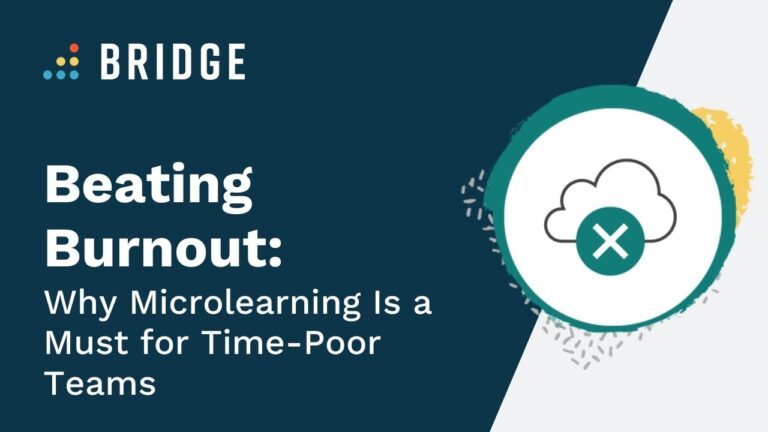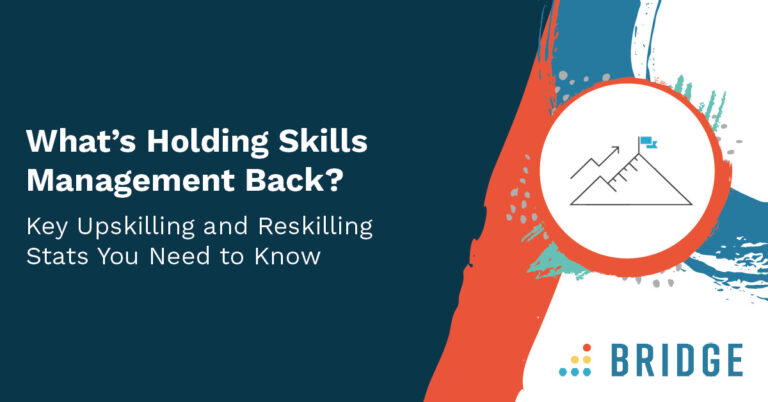When your employees are faced with action-packed schedules and lengthy to-do lists, it’s always going to be tough to find the time for learning—and this problem is magnified if the only training courses in your learning management system (LMS) are densely packed, hour-long, text-heavy chores.
If you want your people to make the most of their learning time, you’ll need to use eLearning formats and strategies that complement their busy working lives.
Watching Out for Overwork: Learning in a World of Burnout
In many organizations, workers aren’t just busy—they’re burnt out.
To get a sense of the scale of overwork in the US, you need only take a glance at the figures. According to a 2021 study put together by authors from the World Health Organization and the International Labor Organization, 488 million people were considered to have long working hours.
Clearly, it’s easy to fall into the trap of overwork, and it’s vital to ensure that learning doesn’t contribute to that problem. After all, not only is it difficult to make time for learning during long working hours, but—according to Yale neuroscientist Amy Arnstern—the chronic stress associated with overwork and burnout results in a loss of motivation.
One of the most impactful ways to ensure your learning programs don’t cause significant workload increases is to adopt a form of learning that fits comfortably around your workers’ existing schedules.
Luckily, microlearning strategies are on hand to give your learners all the developmental help they need while respecting the various competing demands on their time.
FIND OUT HOW TO PUT WELLBEING FIRST | ‘8 Ways to Create & Promote Psychological Safety in the Workplace’
What Is Microlearning?
Microlearning isn’t a tricky concept. As its name suggests, microlearning is all about boiling down learning material to its essentials, making content easily digestible. It’s often delivered in bite-sized chunks, and practitioners usually place an emphasis on content that’s easy to understand and consume.
It’s not too difficult to implement, either. The process of creating microlearning can be as simple as taking a pair of scissors to your existing content, breaking up video material, and reducing written courses to their fundamental messages.
Delivering this kind of learning is, without question, the ideal way to encourage your learners to make time for learning—after all, you’re only asking them for a tiny amount of time, sidestepping some of the issues caused when you place an hours-long course on top of an already teetering to-do list. Better still, microlearning comes with a handy host of further advantages: it’s easily personalized, it’s simple to update, and—most importantly—it actually helps your employees to learn at their best by improving knowledge retention, too!
One survey of learning professionals found that a substantial 71% of respondents could see the potential for microlearning to improve retention, and their instincts have been borne out in similar pieces of research.
For example, in a study published in BMC Medical Education, microlearning practices were found to raise learning outcomes among student nurses. This result corroborates the long-standing idea that microlearning can improve recall and retention—especially when, as a recent study notes, learners continually rehearse content.
GET THE LOWDOWN ON MICROLEARNING | ‘Does Your L&D Approach Meet the Needs of Today’s Learner?’
Automated Microlearning: The Difference Made By Course Staging
If you want to double down on the time-saving benefits of microlearning, it’s worth investing in automated learning pathways that deliver deliciously bite-sized learning content at intervals that make sense for your learners. After all, it doesn’t matter how short your courses are if you deliver them in a single, overwhelming deluge!
Learning journeys are a way to provide learners with custom development paths in which learning experiences are scheduled and unlocked over time. They involve a mixture of:
- Student-led learning in the form of eLearning courses
- Instructor-led learning via webinars and other video content
- Evidence-based learning via checkpoints that allow learners to demonstrate their progress
A good learning pathway will also incorporate development actions that prompt learners to schedule 1:1 feedback sessions with managers, combining the convenience of automation with the personal touch that only a human peer or manager can provide.
This approach doesn’t just help your people make time for learning—it also improves learner outcomes. As Dr Nick Soderstrom notes, there’s a wealth of evidence to suggest that spacing out learning over an extended period of time has a beneficial effect on learners remembering and retaining key details.
The psychologist points to several possible explanations. To some, spacing out learning forces their brains to work harder to retrieve information—whereas, for others, it’s all about consolidating trace memories over time, allowing their brains to cement learning material in long-term memory.
One of the more recent pieces of research in this field only corroborates the idea that spaced learning is beneficial. A study from researchers at the UK’s University of Leicester found that students who used spaced repetition as part of their learning had a statistically significant improvement in their exam results compared to those who didn’t.
Crucially, the learning benefits of course chunking are accompanied by a scheduling process that protects your people from getting overworked, ensuring that they receive all the upsides of a strong development journey without skipping a single work-related beat.
MORE ON JOURNEYS | ‘Next Steps With Bridge Journeys: 3 New Features That Take Your Learners Further’
Want to Foster a Culture of Enthusiastic Learning?
Then you’re in the right place! This blog post is just a taste of our ebook, ‘4 Ways to Get Your Teams to Make Time for Learning’. Download the full ebook and enjoy our array of strategies designed to get your time-poor workforce ready and willing to embrace your learning programs.




